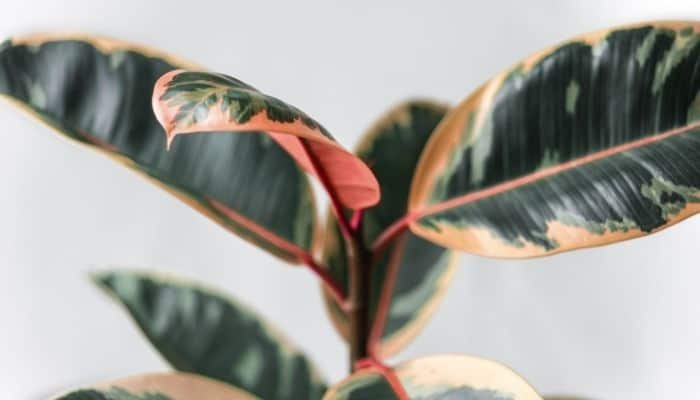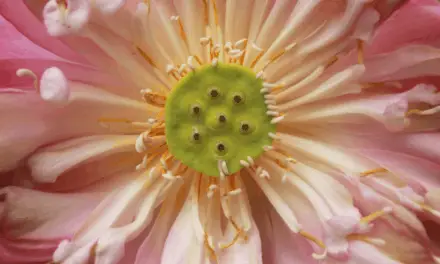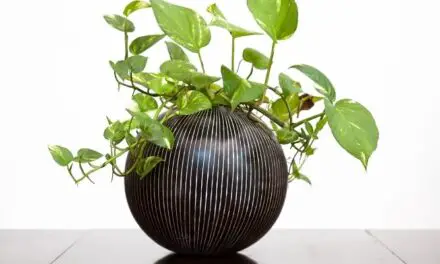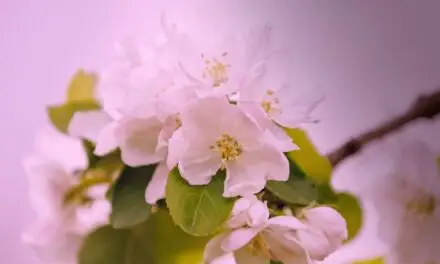With their large waxy leaves, rich colors, and large, tree-like appearance, rubber plants are truly stunning and can make a great addition to any home or office.
But when they don’t get the exact care they need, droop and begin to look unwell, it can be upsetting to see these grand plants take a turn for the worst.
Table of Contents
Why Is My Rubber Plant Drooping?

Your rubber plant is dropping because it is being underwatered or overwatered, not receiving enough light or it has a fungal infection or pest infestation.
Rubber plants are quite sensitive to both light and water. When they suffer from a lack of light or soil that’s either too wet or too dry, drooping leaves are often one of the first symptoms of stress that you’ll notice.
Let’s investigate further and look at why these issues cause your plant to droop and what you can do to bring it back to good health again.
The 3 Most Common Reasons For A Drooping Rubber Plant?
Underwatering
As with most plants, when your rubber plant doesn’t get enough water, its leaves will soon begin to droop or wither.
Drooping leaves that are beginning to look completely lifeless are one of the first signs of underwatering.
Also, if the soil is very dry and pulling away from the edges of the pot, it’s another sign that your rubber plant may be in need of water.
Also Read: How To Properly Care For Your Rubber Plant
Overwatering
Funnily enough, overwatering may also lead to the leaves of your rubber plant’s leaves drooping.
If the leaves begin to feel soft, droopy, and limp, it’s probably being watered too often.
Test the top 2 or 3 inches of soil with your finger and If it feels wet, you may be overwatering.
You could also have a drainage issue.
A pot with no drainage holes and the wrong soil type can contribute to water build-up.
And your plant won’t last long in waterlogged soil.
Lack Of Light
If watering your rubber plant less or more doesn’t fix its droopy leaves, you might have picked a bad location for it.
these plants like plenty of bright, indirect sunlight and can begin to droop if they don’t receive enough of it.
They are tropical plants that have evolved to grow under the rainforest canopy where a lot of bright, indirect sunlight hits them.
A sunny window that has been shaded by a net curtain is often a great spot for them to receive all that indirect sunlight they love so much.
If your rubber plant’s leaves begin to look a bit dull and droopy, or its lower leaves begin to drop off, it may be telling you it needs more bright indirect sunlight.
How To Revive Your Drooping Rubber Pant
Thankfully, these plants are tough and if you catch these problems early, there’s every chance you can bring your rubber plant back to good health.
Water It The Right Way
Not watering your rubber plant the right way is one of the most common causes of drooping.
Try to keep your plant’s soil consistently moist, but never wet or waterlogged.
Feel the top couple of inches of soil with your finger and if it feels quite dry, you can water it.
The season and specific environmental conditions will dictate how quickly the soil dries out, but you should be fine to check the soil for dryness once every week in summer and once every two weeks in winter.
When it’s time to water, give the soil a good soaking and allow any excess water to drain away through the holes.
Rubber plants can be found living in tropical rainforests so they are well used to humidity and getting drenched in monsoon rains.
Drainage
Just make sure the water can always drain away from the roots.
Use well-draining soil that can retain a little moisture and use a pot that has good drainage.
And never allow your plant to sit in waterlogged soil or it can easily lead to root rot.
You can use a layer of pebbles in a saucer to put underneath the pot.
This will help to keep the plant’s roots elevated and out of standing water.
How To Use Tap Water
If using water from your tap, allow it to sit out in the open for a few hours in a bowl before watering.
By allowing water to get to room temperature, it will give chlorine a chance to evaporate and reduce the chance of your plant being shocked by watering it with cold water.
And during winter when your rubber plant goes dormant, you may only need to give it water one time every 2 to 4 weeks.
Humidity
Since rubber plants are from tropical regions, they thrive in warm, humid environments and prefer not to be kept too cold or dry.
In the summer when your plant is growing, pay extra attention to the soil and leaves not be coming to dry.
Misting
A great way to give your rubber plant the humidity it enjoys is to mist it regularly.
Fill a spray bottle with room temperature water and mist the several times each week.
You can mist it anytime if you feel like the air is too dry.
Watch out for times when you have the home heating on as that can significantly dry out the air.
If your rubber plant’s leaves begin to droop, it can often be a watering issue.
And the best way to know what type of watering issue it is is to check the soil.
If the soil feels dry to the touch, you can just give it some water.
If the soil feels soggy. Allow the plant to fully dry out before watering again.
If the plant has been sitting in soil that’s been too soggy, you’ll also need to remove as much of the waterlogged soil as you can, check the roots for rot, remove any brown or mushy roots and repot your rubber plant.
Move It To A New Location
Another common reason for a droopy rubber plant is a lack of sunlight.
Your plant needs lots of light to support its leaves.
If it’s not getting enough, it may begin to look droopy and the bottom leaves will begin to drop off so it can better deal with the low-light conditions.
These plants enjoy lots of bright, indirect sunlight.
But keep it out of direct sunlight or Its leaves might scorch.
The best place for your rubber plant is a sunny window that’s shaded by a net curtain.
If your rubber plant begins to look dull and droopy, and its lower leaves begin falling off, it’s a strong sign that it’s craving more sunlight.
Other Reasons Your Rubber Plant May Begin Drooping
Damage From Pests
Some pests will actually suck the juices out of your rubber plant and that can cause it to droop and wilt.
Pests like aphids and mites damage plants by sucking their juices.
Underwatered plants can be especially susceptible to sucking pests.
If you keep a close eye on your plant, you’ll spot these bugs early and can remove them with a tweezers or by spraying them with plant-safe insecticidal soap.
Fungal Diseases
A fungal disease could also affect your rubber plant and cause its leaves to turn yellow and begin to droop.
Unfortunately, there aren’t any fungicides to treat verticillium wilt.
All you can really do to help your plant is prune affected areas, give it water and fertilize with an ammonium-based fertilizer to stimulate recovery and new growth.
Final Thoughts
If your rubber plant starts drooping, it is most likely down to a watering issue.
If over or underwatering isn’t the problem the next most likely cause will be lack of sunlight.
By following along with this guide, I’m sure you’ll get to the bottom of the issue and soon have your rubber plant back in the best of health.




